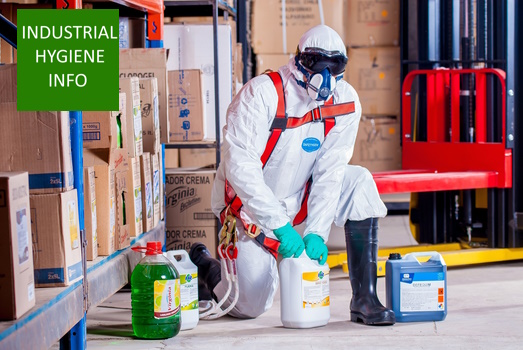What are Chemical Hazards?
Chemical hazards in the workplace are one part of several workplace hazards. Chemical hazards are a serious threat to the health and safety of workers. These hazards can be of many types, such as hazardous, toxic or explosive gases, vapors, liquids, and solids. They can cause adverse health effects, including irritation, chemical burns, respiratory problems, and even cancer.
How does Industrial Hygiene deal with chemical hazards?
Industrial Hygiene is the domain of anticipating, identifying and controlling chemical hazards in the workplace, to prevent adverse effects to workers.It is a part of the domain of Occupational Health and Safety and is also referred to as Occupational Hygiene.
To ensure that these chemical hazards are dealt with properly, the employer has the primary responsibility of the following:
- Anticipating hazards: The employer has to anticipate which chemical hazards are likely to be present in the workplace, based on the operations. For example, a car paint shop owner will know for sure that several toxic and inflammable solvents and paints would be present.
- Hazard Identification: Identifying the types of chemical hazards present in the workplace and their potential health effects. Thus if the employer knows that Acetone for example will be used as a solvent, then it should be identified as a chemical hazard.
- Exposure Assessment: The employer or an Industrial Hygiene professional representing the employer should evaluate the ways in which workers can be exposed to these chemicals, such as inhalation, skin contact, or ingestion.
- Risk Assessment: Determining the likelihood and severity of adverse health effects from exposure to the chemicals. This is the job of the Industrial Hygiene professional.
- Control Measures & Mitigation: These could take the form of either Engineering Controls, Administrative Controls and/or use of Personal Protective Equipment (PPE) so that measures to control or eliminate exposure to the chemicals can be implemented.
Some common chemical hazards examples in the workplace
- Solvents: Used in many industries, solvents can cause irritation, respiratory problems, and nervous system effects. Chemical hazard examples of this type are Acetone or Toluene.
- Acids and Bases: These are used in many manufacturing and construction activities. Acids and bases can cause severe burns and eye damage.
- Insecticides and Pesticides: Used in agriculture, horticulture, gardening and landscaping, pesticides can cause a range of health effects, including skin irritation, respiratory problems, and nervous system damage. An infamous example is the Monsanto pesticide called Roundup.
- Heavy Metals: These are used in many industries and include materials such as lead, mercury, and cadmium. These can cause a range of health effects, including neurological damage, kidney damage, and other ill effects.
Employers are responsible for ensuring that workers are protected from chemical hazards in the workplace. This includes implementing effective control measures, such as proper Engineering Controls, Administrative controls and providing PPE, as well as providing Industrial Hygiene training and education on the safe handling and use of chemicals.
OSHA and other regulatory bodies, such as the European Agency For Safety and Health at work have several Industrial Hygiene rules and regulations that have to be followed.
The domain of Industrial Hygiene plays a vital role in identifying and controlling chemical hazards in the workplace to protect the health and safety of workers.
